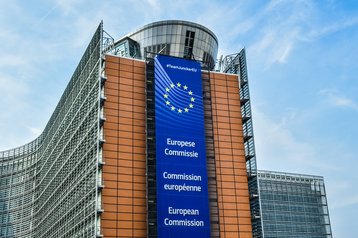The European Commission (hereon referred to as the Commission) continues its rushed implementation of the EU’s Energy Efficiency Directive (EED). The second mandated delegated report is scheduled to be published on May 3, 2025, just three months after the award of the technical support contract. The scope of the delegated report is to:
- Provide a status of the information and key performance indicators (KPIs) reporting process.
- Propose a data center rating scheme.
- Propose, as appropriate, minimum data center energy performance standards (MEPS).
The Commission intends to hold three public workshops to gather stakeholder comments and inputs on its rating/labeling and MEPS proposals before May 3, with a fourth workshop held the week of June 16 to gather feedback on implementation schemes for a European-wide rating scheme and MEPS. The first workshop took place on February 11, 2025.
The announcement of an early report publication date suggests that the Commission has already decided on the basic outlines of the rating scheme and thresholds for any potential MEPS. This raises several red flags regarding the extent and importance of stakeholder involvement in the preparation of the report.
- The Commission has not acquired usable data on the energy use and performance of KPIs likely to serve as MEPS from the first EED reporting period. Any proposed rating scheme and MEPS will be based on assumptions and unsubstantiated performance data from marketing claims, not actual operating data.
- Data center operators will likely have a week or less to prepare and submit comments on proposed rating or KPI schemes and the preliminary and final draft report. The short turnaround time will reduce the quality and thoughtfulness of the comments, particularly from industry organizations, such as DigitalEurope and The Green Grid (TGG), which must achieve consensus before releasing a comments document. It also reduces the time available to the Commission and its consultants to consider and explore alternative approaches proposed by stakeholders.
- There is little consensus among data center operators and interested stakeholders, institutes, and non-governmental organizations on the structure of rating schemes. The Oeko-Institut in Germany has proposed a rating/labeling scheme, TGG is preparing to publish a proposal, and DigitalEurope is developing a position paper with recommendations. Other stakeholder groups may have or are preparing proposals. The accelerated schedule, however, does not provide sufficient time for the required debate and discussion to forge a working consensus on the practical first steps for a rating/labeling scheme.
- IT energy use represents 60 to 90 percent of energy use in most data centers. However, there are no effective standards or methodologies to assess the energy performance of the IT infrastructure as measured by work per watt or kilowatt-hour. Neither the Commission nor the industry has a coherent plan to calculate and report server work capacity, which is a critical component of an IT MEPS, to the European database on data centers.
- The Commission and some member states are fixated on a PUE of 1.1 to 1.2 as the first MEPS for data centers. Germany requires new data centers that begin operation on or after July 1, 2026, to achieve an average PUE of 1.2 or less. The Commission has indicated their goal is to mandate an average PUE of 1.1 for new data centers in 2030 and for them to be fully liquid-cooled beginning in 2035. While these seem to be worthy goals, they are not practical. Furthermore, improving PUE by increasing the supply air temperature (to increase free cooling) can cause IT equipment to use more energy because of higher fan usage, leading to higher overall energy consumption in the data center (even if the PUE looks better). The Commission needs to consider other MEPS, as well as MEPS thresholds that can deliver equivalent or better energy and environmental performance, before making final decisions.
Observations
Operators will need to be involved, individually and through their industry associations, to advocate for measured, incremental progress toward an industry-wide rating/labeling scheme and MEPS. As a starting point, it seems advisable to select a few performance metrics, such as PUE, cooling efficiency ratio, renewable energy factor, and a simple IT efficiency metric to create a three-tier rating/labeling system. The tiers would be indicative of:
- Top tier. Performance leadership.
- Middle tier. On the right track, but with work to do.
- Lowest tier. A need to take immediate action to improve.
The data collected through this process, along with information on the power demand and work capacity of the data center required by the EED, can be used to refine the rating system and propose MEPS thresholds for different data center types. The rating system and eventual MEPS thresholds should be structured to incentivize operators to make year-on-year improvements in the environmental and energy performance of their data centers.
Read the orginal article: https://www.datacenterdynamics.com/en/opinions/eed-delegated-report-due-early-may-whats-the-rush/









